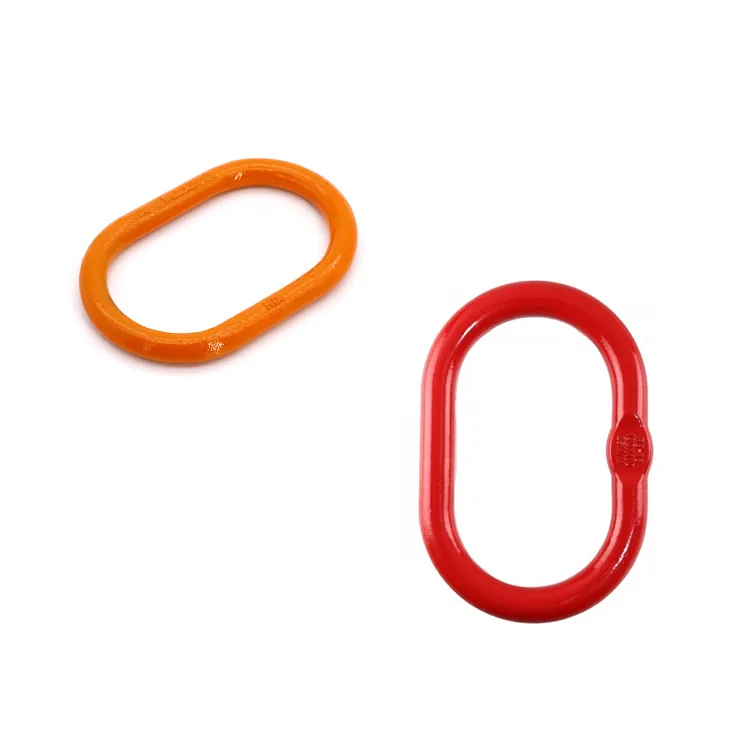News
Dec . 20, 2024 15:25 Back to list
Different Types of Lifting Hooks and Their Applications in Industry
Understanding Lifting Hook Types An Essential Guide for Safe Lifting Operations
Lifting hooks are indispensable tools in the realm of material handling and logistics. Their primary function is to secure loads during lifting and transportation, ensuring safety and efficiency in various applications. With the myriad of lifting hook types available on the market, selecting the appropriate one for a specific task can be a daunting challenge. In this article, we’ll explore the different types of lifting hooks, their uses, and some essential considerations for safe lifting operations.
Types of Lifting Hooks
1. Clevis Hooks Clevis hooks are widely used in rigging applications, allowing easy attachment and detachment of the load. Their design features a U-shaped clevis that connects hooks securely to chains or cables. Clevis hooks come in various sizes and load capacities, making them versatile for multiple industrial applications.
2. Swivel Hooks Swivel hooks provide flexibility as they can rotate 360 degrees. This feature is particularly beneficial in scenarios where loads may need to be repositioned without disconnecting the hook. Swivel hooks are often used in cranes and hoists, facilitating efficient lifting and movement of heavy loads.
3. Latch Hooks Latch hooks include a safety latch mechanism that prevents the load from slipping off during lifting operations. This added security makes them ideal for applications where load stability is critical. Latch hooks are commonly used in lifting chains and come in various designs suited for different lifting configurations.
4. Sling Hooks Sling hooks are designed specifically for use with slings. They generally feature a wide opening that allows slings to pass through easily. Sling hooks play a crucial role in ensuring that loads are securely attached, and like other types, they often come with safety latches.
5. Eye Hooks Eye hooks are designed with a loop at one end for easy connection to chain or rope. They are simple yet effective, often used in lighter lifting applications. Their compact design makes them easy to incorporate into various rigging setups.
6. Safety Hooks Safety hooks are built with a safety latch or locking mechanism that secures the load. These hooks are intended to reduce the risk of accidental disconnection, making them ideal for heavy-duty and critical lifting tasks.
Choosing the Right Lifting Hook
When selecting a lifting hook, several factors must be considered
- Load Capacity Each hook type comes with a specified load capacity. It’s essential to know the weight of the load and select a hook that can handle it safely. Overloading a hook can lead to failure and potential accidents.
lifting hook types quotes

- Material Lifting hooks are typically made from various materials such as steel, aluminum, or synthetic composites. Steel hooks are the most common due to their strength and durability, making them suitable for heavy lifting.
- Application Environment Consider the working environment where the hook will be used. Harsh conditions, including exposure to chemicals or extreme temperatures, may necessitate a specific type of hook designed for resilience.
- Type of Load The nature of the load being lifted (static or dynamic) can influence the choice of hook. For instance, a dynamic load that swings or moves may require a different hook than a static load.
Safety Considerations
The importance of safety in lifting operations cannot be overstated. Here are some critical safety tips
- Regular Inspections Conduct regular inspections of lifting hooks to identify wear and tear. Replace any hooks that show signs of damage or excessive wear.
- Training Ensure that all personnel involved in lifting operations are properly trained on the correct use of lifting hooks and the associated safety protocols.
- Proper Usage Avoid using lifting hooks for unintended purposes. Ensure that all hooks are compatible with the equipment being utilized.
- Load Management Always verify the weight of the load before lifting and ensure that the hook and rigging equipment are rated to handle it.
Conclusion
Understanding the various types of lifting hooks and their appropriate applications is vital for ensuring safe and efficient lifting operations. By considering load capacity, material, application environment, and adhering to safety protocols, organizations can significantly reduce the risks associated with lifting heavy loads. Remember, safety is paramount in lifting operations, and a well-chosen lifting hook is a crucial component in the overall lifting strategy.
